Modern businesses require fast, agile, scalable IT solutions. A hybrid cloud model can offer simple and efficient ways to meet these ever-growing demands. Hybrid cloud solutions have been growing in popularity for Managed Service Providers (MSP) in recent years.
But despite marked growth, many companies still lack the tools necessary for multi-cloud management and to mobilise hybrid infrastructure effectively. That’s primarily because there is still a lack of understanding about how hybrid cloud architectures actually work.
In this article, we’re going to cover the ins and outs. We’ll finally get to the bottom of what a hybrid cloud environment really is, how it differs from public and private models, and how you might implement a successful cloud strategy. Let’s start with the basics. What is a hybrid cloud?
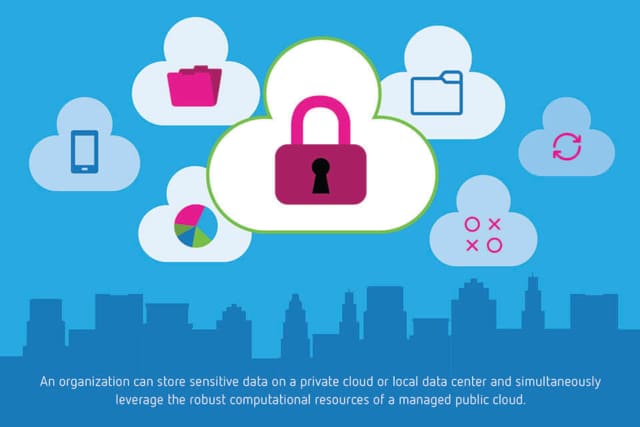
What is a hybrid cloud?
A hybrid cloud is a type of computing environment. You might already be aware of the differences between public and private cloud systems. A hybrid cloud combines the two, allowing data migration between public and private cloud infrastructure.
By sharing data in this way, the idea is to help businesses deal with demand fluctuation. Hybrid cloud computing helps businesses scale their in-house, on-premises infrastructure up to the public cloud at times of high demand. The public cloud becomes overflow IT support.
These businesses do not have to hand over all of their sensitive data to the third-party cloud provider, though. Sharing the computing burden is, therefore, a flexible and convenient way to keep business-critical applications running effectively whilst maintaining security.
The hybrid cloud is a mixed compute, cloud storage, and services model made up of on-premises, private, and public cloud infrastructure. It allows operating systems to deal with demand fluctuation via seamless integration between in-house and cloud IT services.
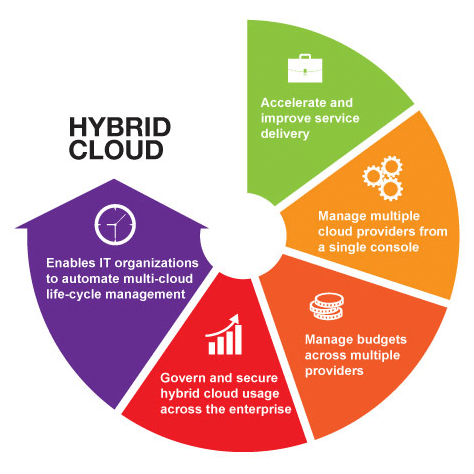
What are the benefits of a hybrid cloud?
Flexibility
Hybrid cloud architectures incorporate multi-cloud platforms across the public and private cloud. This added flexibility and functionality across a range of storage options allow businesses to reach a more diverse clientele and expand their reach to different market segments.
Scalability
Hybrid cloud systems boast added scalability. Managed Service Providers can distribute resources according to demand without overspending. Instead of investing a lump sum in always-on systems like a dedicated data centre (data centre in the USA), hybrid cloud systems facilitate a need-based service.
Cloud deployment is better able to deal with ups and downs in a company’s IT demands. This reduces problematic service interruptions as a result, making for increased flexibility and reliability in the long term.
Cost-effectiveness
Hybrid cloud solutions are great for cost savings. Switching to a hybrid cloud can save MSPs costs on so many levels. By replacing multiple, complex, IT solutions with single hybrid cloud architecture, organisations save time and money on the infrastructures themselves and the experts staffing them. As a result, the total cost of ownership remains consistently low.
How does the hybrid cloud work?
We know that hybrid clouds combine in-house, private, and public clouds so that data can move between different cloud environments. But how does the hybrid cloud work?
Connective tools and protocols facilitate hybrid cloud connectivity. That means application programming interfaces (APIs), virtual private networks (VPNs), and wide area networks (WANs). These tools connect multiple computers together.
Using this foundation of interconnectivity, workloads can be dispersed. This is what allows separate clouds to become hybridised. Virtual machines and software-designed storage abstract resources and pool them into data lakes.
Management software then allocates the resources to appropriate environments, to be authenticated and provisioned on-demand.
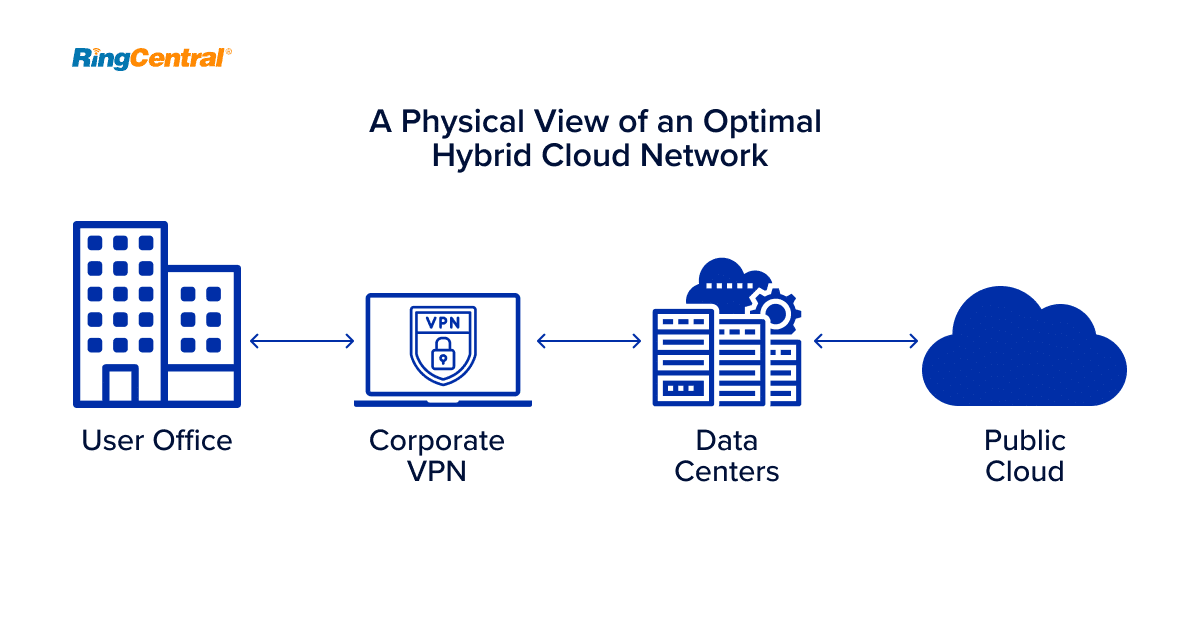
What are the differences between public cloud, private cloud, and hybrid cloud?
Public cloud
Ideal App Types: Development and testing – DevOps – Training services – Websites – CRM- Project management
Tenancy: Multi-tenancy. A public cloud stores the data of many different organisations in a shared environment.
Storage location: Data is stored in an off-premises data centre hosted by the cloud service provider.
Security: The public cloud lacks security. It is the least secure of the three cloud options. Data and processes aren’t protected by your own firewall. Not well suited to sensitive data or mission-critical IT workloads.
Flexibility: The public cloud offers technical agility with scalable, flexible systems to meet changing workloads. Public cloud systems also offer minimal technical control.
Costs: Pay-as-you-go pricing. The cloud service provider will provide the hardware, set-up, cloud resources, and network accessibility. This is agreed upon in an SLA.
Private cloud
Ideal App Types: Web-scale applications – Enterprise applications
Tenancy: Single-tenancy. A private cloud software stores the data of a single organisation only.
Storage location: Dedicated and secure environments that cannot be accessed by anybody outside of the governing organisation.
Security: Private cloud services can be tailored to meet stringent security regulations, according to company needs and protocols.
Flexibility: The private cloud is highly scalable. It meets changing demands with efficiency. The infrastructure can be changed easily to meet organisational needs as they develop.
Costs: Can be costly. The organisation must invest in, staff, and manage its own hardware applications and network.
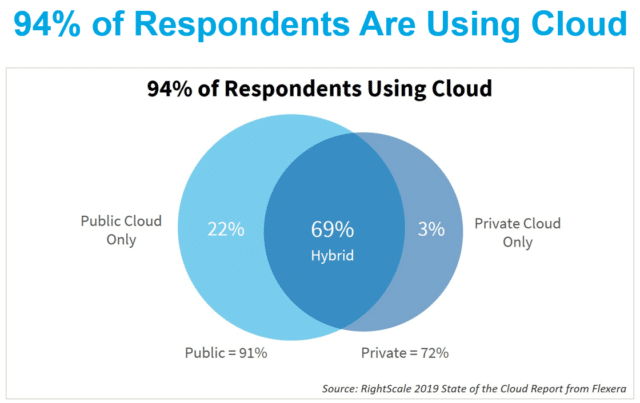
Hybrid cloud
Ideal App Types: Great for updating legacy applications – Cloud-native application development
Tenancy: Data stored in the private cloud remains private, whilst data stored in the public cloud is multi-tenant and stored in a shared environment.
Storage location: Data stored in the private cloud is stored in a dedicated, secure environment. Data stored in the public cloud is stored in a shared environment.
Security: Hybrid cloud security is one of its best features. Organisations do not need to share sensitive data with the cloud service provider. The separation of data can also be a plus when it comes to disaster recovery.
Flexibility: Hybrid cloud systems are highly scalable and flexible, allowing organisations to scale up to the public cloud at times of increased output or demand.
Costs: The organisation itself will need to invest in private cloud infrastructure and services. The cloud service provider will provide and manage the public cloud services at a fixed, inclusive rate.
Hybrid cloud challenges
Despite boasting added flexibility for businesses, the hybrid cloud also poses some complex challenges. These include:
- Integration: Achieving seamless integration between private and public clouds isn’t easy. It’s a case of knowing where to place certain workloads and how to build the appropriate supporting infrastructure. Not all applications are well suited to the cloud. Splitting operations between two environments can, therefore, complicate application management.
- Security: Maintaining security becomes harder when data is being transferred across different computer systems. All transfers of data must be processed within appropriate policies and procedures. This requires a coordinated effort on the part of both the private and public cloud management teams.
- Network: Managing network infrastructure in a hybrid cloud setup is challenging. Network designs will need to accommodate bandwidth needs and branch network locations across the private and public cloud. That means network developers need a detailed understanding of an application’s scalability requirements.
Open-source software can help in the transition to a hybrid cloud model. Open source offers flexibility and avoids vendor lock-in.
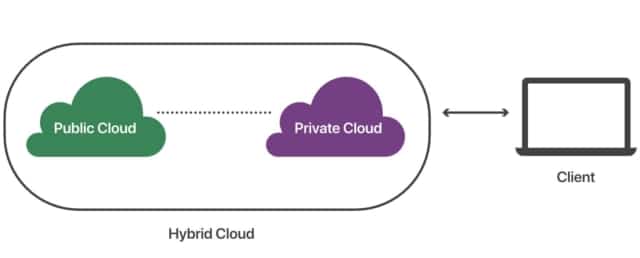
What are hybrid cloud management tools?
Managing a hybrid cloud can be a complex task, due to the fact that every cloud solution will use its own specific API, and have its own management protocols and networking capabilities. To stay on top of this workload, enterprise-grade management tools are available for assistance.
Hybrid cloud tools help organisations to manage these multifunctional and complex environments. They allow organisations to manage their infrastructure in one place, reducing costs and increasing productivity in return.
Top hybrid cloud providers
If you think that an IaaS hybrid cloud solution could suit your organisation’s needs, then read on. It’s important to pick a provider that works for your business. So, let’s take a look at some top hybrid cloud providers in the market today.
- Microsoft: True hybrid solutions across three core products (Microsoft Azure, Windows Server, and Microsoft System Server)
- Amazon: integrated networking via Amazon Virtual Private Cloud (VPC), alongside the better known AWS
- VMware: utilises a network of partners to deploy full hybrid solutions
- Google Cloud Platform: hybrid cloud solutions supported by a deep partner network
- Rackspace: focus on infrastructure with a dedicated database and application servers
- EMC: hyper-convergence and great storage options for operations-heavy organisations
- IBM: the Bluemix hybrid cloud offers an open architecture that focuses on developer and operations access.
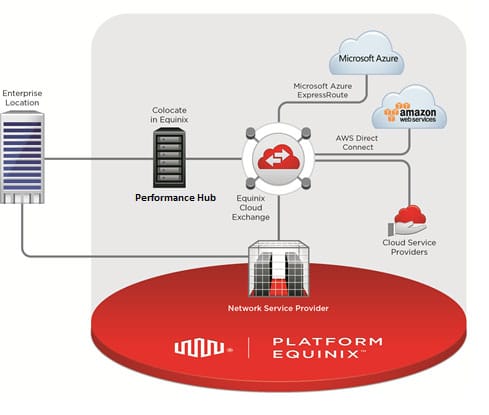
How RingCentral supports hybrid cloud solutions
Thinking of moving your business to the cloud as part of a digital transformation? RingCentral can help you with the cloud adoption process. RingCentral is itself a cloud service provider with a focus on collaborative communication SaaS solutions. Effective cloud-based communications are a great way to pull everything together.
When your IT infrastructure is dispersed between public and private cloud management systems, having a cloud-based telecommunications infrastructure to match can boost collaboration, customer service, and streamline operations, even allowing for greater automation.
RingCentral platforms aren’t just phone systems. They are open, scalable, and secure platforms that support business video and voice communication, without the hassle and expense of on-premises PBX hardware.
Originally published Jan 08, 2021, updated May 15, 2021


